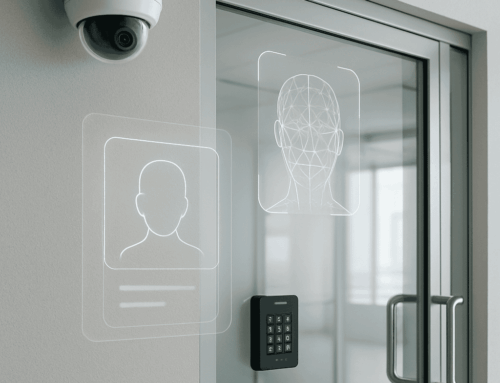Data Center Redundancy: Understanding This Critical Concept

Adequate data infrastructure is crucial to how businesses operate daily and how IT teams address data-related interruptions and failures in case of unanticipated issues. Data infrastructures must be resilient to ensure that a company’s data availability and continuity remain unaffected in the event of data failures.
IT teams protect their organization’s sensitive data through data center redundancy, a term that describes making a data center fault-tolerant or “redundant.” Data redundancy helps teams navigate a data center’s failures, outages, and interruptions.
As one of the most crucial elements of a healthy data infrastructure, data redundancy is something that all IT business professionals should know. To guarantee that your data can continue to operate even when its components fail, we’ve collected everything you should know about data center redundancy in this comprehensive guide.
Types of Data Center Redundancy
IT teams should be aware of the different categories and tiers of data redundancy when implementing measures to safeguard their data infrastructure. Below is a complete breakdown of the types and tiers of data redundancy to help ensure that your infrastructure is prepared for outages.
Power Redundancy
Power redundancy describes the aspect of data redundancy when multiple power sources are prepared in the event of a data failure or service outage where your system’s power flow is interrupted. Without power, data centers cannot function properly, which can snowball into many unpleasant consequences for your business. Power redundancy includes generators, switchboards, lines, and uninterruptable power supply systems (UPS).
Best Practices for Power Redundancy
- Invest in multiple redundant power sources and UPS systems to mitigate the risk of a single point of failure.
- Ensure that all power sources are connected to a centralized power control system.
- Ensure that power systems are regularly tested and monitored for any potential issues.
Cooling Redundancy
This element of data redundancy focuses on having various cooling systems in place to keep a data center at the optimal temperature and avoid overheating. Equipment like air conditioners, liquid cooling tools, and chillers are all integral to safeguarding a data center and maintaining data consistency regardless of external infrastructure issues.
Best Practices for Cooling Redundancy
- Invest in redundant cooling systems with multiple cooling units to keep the data center cool.
- Ensure the cooling system is designed to provide sufficient cooling capacity in case of a single-unit failure.
- Have multiple cooling methods available.
Network Redundancy
Network redundancy refers to a component of data infrastructures where a business has numerous paths for traffic to ensure that data continues flowing during outages and failures. Network redundancy keeps businesses online and running through alternate systems such as a ring network or Multiple Spanning Trees (MST).
Best Practices for Network Redundancy
- Use multiple redundant network connections to ensure the data center is always connected to the broader network.
- Invest in dual-homed systems with multiple network interfaces for added resilience.
- Configure routers and switches for high availability and use redundant routing protocols.
Storage Redundancy
This component of data redundancy involves creating numerous, replicated companies of your data and copying this information across different disks and devices. By storing your data in different locations, such as hard drives, your business can operate smoothly even if your primary storage device fails.
Best Practices for Storage Redundancy
- Invest in redundant components like disk drives, power supplies, and system boards.
- Invest in high-grade components designed to withstand heavy loads and certified for high-reliability levels.
- Use clustering and load balancing to spread the workload across multiple servers.
Data Center Redundancy Levels
Data center redundancy is measured in varying data center redundancy levels, classified by the letter N. N represents a standard measure for your data center’s functionality and the infrastructure required to maintain data infrastructure processes. Though the current industry standard for data redundancy is N+1, knowing all the data center redundancy tiers is crucial to a protected data center.
- N+1 redundancy: N1 redundancy indicates an extra unit available to support data components that need to be replaced briefly. This standard implies that there is one additional unit for every four units needed, with N representing a single point of failure in your infrastructure.
- 2N redundancy: 2N redundancy is a separate system for your data center’s power needs, resulting in relatively identical data systems.
- 3N/2 redundancy: This type is more reliable and affordable than 2N redundancy. A three-makes-two approach implies a configuration where your data system manages and loads critical information from power supplies.
- 2(N+1) redundancy: 2N1 redundancy is the highest redundancy level and requires a separate system that IT teams can switch to if a power outage occurs. Though similar to 2N redundancy, 2N1 redundancy offers additional components if equipment and parts in identical systems fail.
Why is Data Center Redundancy Important?
There are numerous advantages to data center redundancy, making it a critical factor for any successful and sustainable data infrastructure. Positive data redundancy is achieved when a business creates various versions of data to use as a backup in case of data failures.
Data redundancy is crucial to protecting an organization’s sensitive data and guarantees that a company’s data is effective and sustainable when downtime occurs. While a brief data outage might not sound like a massive deal, businesses can face numerous, severe consequences without data center redundancy. For example, a lack of redundancy can cause businesses to experience the following:
- Poor customer satisfaction that reflects on your company’s reputation
- Detrimental and potentially destructive financial losses
- Lost productivity and time wasted in your company
- Far-reaching legal liability issues.
Challenges and Risks
While there are numerous advantages to data center redundancy, IT professionals should be aware of its potential challenges and risks. Unintentional redundancy can cause poor organizational decision-making, leading to various problems. Below are some of the primary issues associated with data redundancy.
- Data inconsistency: Data center redundancy can cause inconsistencies in your data when an organization stores information in varying formats across different platforms. Issues arise due to missing information, incorrect data values, and outdated data that does not benefit the business.
- Cost: Data redundancy also risks increasing your company’s data maintenance costs. Having numerous copies of the same data can make your data system waste and increase your overhead costs. Unintentional redundancy is complex for some teams to identify, meaning that you might struggle to locate the issues directly responsible for increased costs.
- Failure: Redundancy can increase the chances of data failure and system errors in the writing, processing, and transferring data.
Looking Forward
- As data redundancy improves and businesses begin taking proper action to protect their data, numerous future trends for data center redundancy have emerged. Some of the significant future trends to expect from data redundancy include the following:
- Modernized data center facilities
- Data centers relying on cloud-based software
- Hyperconverged infrastructures
- New demand for development due to technologies like blockchain, AI, and the metaverse
Find the Best Technology Integration From Smart Systems
Navigating data center redundancy and staying on top of constantly evolving technologies is challenging for any IT professional. With Smart Systems, you’ll find the best technology integration partner dedicated to helping you navigate redundancy and create the safest data infrastructure possible.
Elevate your data infrastructure today by contacting the experts at Smart Systems.
About i.e.Smart Systems
i.e.Smart Systems is a Houston, TX based technology integration partner that specializes in design and installation of audio/visual technology and structured cabling. For more than three decades, our team of in-house experts has partnered with business owners, architectural firms, general contractors, construction managers, real estate developers, and designers in the Houston market, to deliver reliable, scalable solutions that align with their unique goals.




